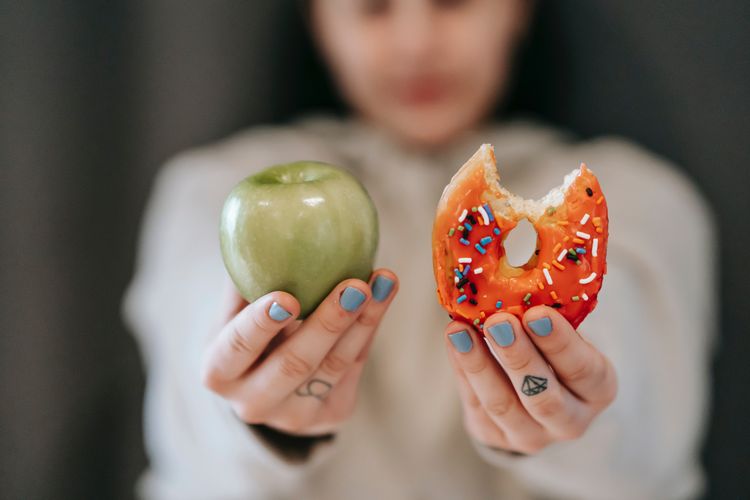Grow Your Toolbox With Healthy Coping Skills

How to Confidentally Confront Your Problems in Life With the Right Tools
Do you run away from your problems or run to face them?
Whenever we face difficulties or challenges in life, we need to decide how we are going to deal with them. We can break those choices into two groups: healthy or unhealthy coping mechanisms.
Both healthy and unhealthy coping skills offer relief. But, unhealthy coping mechanisms tend to only provide temporary relief and they can be detrimental in the long run. They can lead to a toxic cycle of dependency since the key issues don't get resolved.
Unhealthy coping skills are like a heavy coat of armor, which lets us hide away from problems or shield ourselves from them. Wearing this suit of armor is exhausting. It is heavy to put on and isolates you from others.
Healthy coping mechanisms are like tools in a toolbox. Some people may only have a hammer while others have several toolboxes filled with tools. The more tools you have in your toolbox, the more likely it is that you can find the right tool to fix your problem. Sometimes, even when we have the right tools, there can be jobs that requires more than one person. This is where a therapist can step in to help you.
Note: I'm creating this list as a resource for my own clients to save and go over whenever they need the reminder. Share it with anyone you think would benefit from it. It is intended to be used alongside therapy, not in replacement of it. Some of these tools may not work for you, while others do. It is up to you to experiment and find which ones you would like to keep.
This is a long document, so I suggest saving it if you would like to come back to it at any point.
In my practice, I always recommend a holistic approach to healing. True wellness comes from looking after all aspects of your life: physical, mental, emotional, and spiritual health.
Self-Investment: Prioritizing Yourself
Before we get into coping skills, we need to lay the groundwork. This is the first step to prioritizing yourself and trying to reduce the need for those coping skills. For some, this step can only happen with a therapist. A therapist has the expertise in identifying triggers and the boundaries needed.
1. Recognizing Triggers
A trigger is when something sparks an intense emotional reaction. Triggers can be due to memories, experiences, or events that are linked to unresolved trauma.
Everyone has different triggers. Our reactions to them differ as well. It is important to understand our own to navigate the feelings that occur.
For example: A woman who feels panic, fear, and rejection when her partner says he is going out with friends. The situation by itself does not warrant that response emotional response. However, after a history of abandonment, situations where her partner spends time away from her become a trigger.
2. Establish and Maintain Boundaries
Boundaries are essential for good mental health. They are the limits you place around your time, emotions, body, and mental health. Having clear boundaries helps you remain resilient and content. Boundaries protect you from being used, manipulated, or emotionally drained by others.
For example: someone decides to limit contact with a family member that tries to manipulate him. If his family member only contacts him to lie and demand money, a healthy boundary is to limit or cut out that person from his life.
3. Make Goals and Work Toward Them
Another key step to prioritizing yourself is to make goals and work towards them. Without goals, you are directionless and at the mercy of the ideas of others. Since you don't know what you want to do or where you want to go, you are more likely to attach yourself to someone to guide you.
Setting goals will clarify how you should spend your time, and what boundaries can serve you. It will give you a focus and it is a key step to self-mastery. Gaining confidence in yourself begins with trusting yourself.
For example: If someone has a goal of running a marathon and becoming physically healthier, they will have an easier time saying no to alcohol when pressured.
Recap: Laying the groundwork by investing in yourself makes it easier to use coping skills. Understanding your triggers and maintaining your boundaries means you know when to use your healthy coping skills and why. Having goals gives you a focal point to orientate yourself and understand where you want to be.
Healthy Coping Skills
Whenever we try something new for the first time, it feels uncomfortable because we aren't used to it. Trying out these exercises for the first few times may feel unnatural or silly. That's okay. Embrace the silliness. Give the exercises a few tries before ruling them out completely.
The more you practice using these tools, the more natural they will feel. The more experience you have with them, the more you will identify which situations to use them in.
1. Deep Breathing
This is always the first tool in the toolbox that I give. It works well on its own but can be combined with other tools as well. Different therapists may have their own version of this tool, but the goal is the same.
For this skill, you need to focus on breathing in through the nose and exhaling out through the mouth.
The aim is to completely fill the lungs on inhale and completely empty them on the exhale. At first, this technique will be challenging and you may count quickly. But as you adapt, you should lengthen the breaths as much as you can.
When we are triggered, our body goes into fight-or-flight mode. There is a spike of adrenaline as our body prepares for action. Heart rate and breath rate increase. Deep breathing is forcing the breathing to slow down. It is sending a message to the brain, "Everything is okay. I am not in danger right now."
Tool: Breathe in through your nose for five seconds, hold your breath for three seconds, exhale through your mouth for five seconds, and hold for three. Repeat as many times as needed, at least 3 cycles.
2. Mindfulness
This is a technique that forces your attention to the present moment. If you are experiencing anxiety or troubling thoughts about the past or future, this skill snaps you back to 'right now.'
Tool: In as much detail as possible, describe 5 things you see, 5 things you hear, 5 things your body feels (physical not emotional), 3 things you smell, and 1-2 things you taste.
3. Overwhelm Your Attention
This technique works by combining physical activity with mental activity. Doing both overwhelms your attention so you no longer have the brainpower to focus on the negative thoughts or feelings.
In my practice, I ask clients to come up with several examples of both physical and mental exercises that they can make many combinations of.
Tool: Combine the physical activity (example: jumping jacks) with the mental activity (example: counting backward from 50 by 3's).
4. Physical Exercise
Not only is physical exercise a lifestyle habit, but it is a perfect coping skill as well. Exercise makes you physically exhausted, and it becomes harder to focus on the negativity. It can provide clarity on how to address the problem. The release of the feel-good hormones can also immediately have a positive effect on your mood.
Tool: pick a physical activity that you enjoy, preferably one that gets your heart rate in the aerobic range for your age group.
5. Intentional Positive Thoughts
Oftentimes when we are facing a challenge or problem, we tend to ruminate. This means we hyper-focus on the issue and we can end up in a negative spiral. Intentional positive thoughts can be affirmations or challenge negative thoughts.
For example: If a student is worried about an upcoming test and she keeps panicking about failing, she could challenge those thoughts. "I've prepared well for the test and I have never failed a test before. Even if I fail, it is not the end of the world and I can make up the grade on the next test."
Tool: Use positive affirmations ("I am smart and hardworking") or challenge directly the negative thoughts by providing evidence against them ("I will not fail because I have studied and prepared the best that I can.")
6. Socialize and Brainstorm Solutions
Talking to loved ones can instantly make you feel better. You can use their feedback to brainstorm solutions to the problem. Often, our loved ones can see aspects of the problem that we are blind to.
Tool: Spend quality time with loved ones and ask for their help to come up with solutions to the problem.
7. Think About Consequences
This can be a technique that helps you decide how you should confront the issue. What is your first instinct? What are your emotions and thoughts?
For example: if the student feels stressed about the upcoming exam, he has different coping skills. He could study to feel more prepared, ignore the worry by going out with friends, or do meditation to reduce anxiety. Ignoring it may only make him more stressed in the long run as he didn't prepare nor deal with the anxiety.
Tool: Think about what happens if you ignore the situation. Consider different solutions and their consequences.
The next three coping skills are EMDR focused, but we can still use them outside of EMDR therapy. These tools are to help in the case of overwhelm
8. Body Scan
When we experience trauma, it often has an impact on our physical body. Sometimes we may not even be aware of the tension, pain, or numbness that is present in the body. This tool allows us to recognize when it is there and then address it.
Tool: Close your eyes and concentrate on the top of your head, down your neck, shoulders, chest, hips, legs, and feet. As you focus on each body part, notice how it feels. Any pain, numbness, tension, or tightness? Then you give that sensation a size, shape, and color to represent it.
Next, you want to use deep breathing (with no breath holding) to focus on that shape. Visualize that you breathe in the fresh air with healing oxygen on the inhale. On the exhale, you imagine the shape getting smaller, lighter, and moving further away from you. You continue with this visualization until the shape disappears completely. Do one last check to see if the pain or tension has gone.
For example: With a headache, you might give it a big red circle. With each exhale, you imagine it getting smaller and further away from you. The red also fades on the exhale.
9. Comfortable Place
For this technique, we want to associate a visualized image of a comfortable place with a word of choice. An actual location would be best, but if you cannot think of any, then we can use an imaginary place.
Pick a place where you feel completely at ease, comfortable, and safe. In your visualization, you should be alone in this place. You want to give it as many details as you can, just like the Mindfulness activity. What can you see, hear, feel, smell, and taste by being there? You want to make it as positive as possible.
Then, you want to give this place a name. It can be one word or a phrase that captures its essence.
Once you have that, you want to hold the visualization image with the name you gave it in your mind. We are trying to associate the two. Notice your feelings and emotions.
You only want to practice this activity when you are experiencing positive emotions. If you notice any anxiety, fear, anger, or other negative emotions, you should stop the exercise for now. Come back to it at another time.
The goal is to transport yourself instantly to this visualized comfort place when distressed. By thinking about the name/phrase you called it, you can return to feeling safe and relaxed.
10. Proud Moment
This is another visualization technique. Think of a moment when you felt proud of yourself. It can be something little, like making your dog happy, or something bigger, like getting a promotion at work.
Focus on this memory and pinpoint the moment when you felt the most proud. Try to visualize it in as much detail as possible. In the memory, what could you see, hear, feel, and smell around you?
What feelings, emotions, and thoughts did you have at that moment? What do you feel now thinking about it? Focus on the feeling of pride and other positive emotions. We want to link the pinpoint moment you chose with the word proud. Similarly to the previous skill, if you are feeling distressed, you can access this memory to make you feel better.
Recap
In life, we all face challenges. Coping skills are our ways of dealing with those situations, emotions, or negative thoughts. We can either use healthy or unhealthy coping skills. Unhealthy coping skills don't solve the problem, only mask it for a while. Healthy coping skills are tools that we can use to address problems directly. If we are unsure of how to deal with the situation or what more support to confront it, a therapist would be beneficial.
Book recommendations
"The Body Keeps the Score: Brain, Mind, and the Healing of Trauma" Bessel Van der Kolk
"The Myth of Normal: Trauma, Illness, & Healing in a Toxic Culture" Gabor Mate
"It Didn't Start With You: How Inherited Family Trauma Shapes Who We Are and How to End the Cycle" Mark Wolynn
Leave a comment if you have any other healthy coping skills you would like to recommend.
If you like this article, subscribe.
Note: The book recommendations are affiliated links, which means I earn a small percentage if you purchase using those links.




